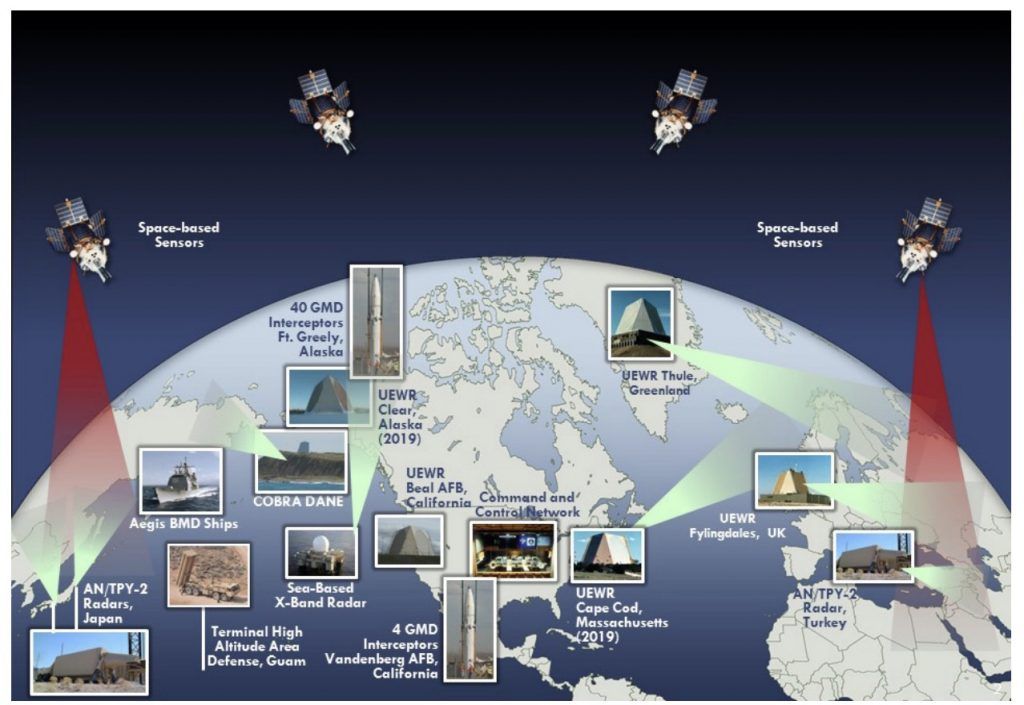US ballistic missile defenses, 2019
By Matt Korda, Hans M. Kristensen | October 31, 2019
 Current homeland missile defense architecture. (UEWR = upgraded early warning radar.)
Current homeland missile defense architecture. (UEWR = upgraded early warning radar.)
Nuclear Notebook: How good are US missile defenses?
According to the latest Missile Defense Review, the United States will continue to enhance its four primary missile defense systems – one for homeland defense and three for regional defense – without “any limitation or constraint.” Doing so is likely to be destabilizing, as potential adversaries will attempt to build offensive systems to offset the United States’ defensive systems. This dynamic is currently on display with Russia and China, both of which are developing missiles that are specifically designed to counter US missile defenses.
Missile defense systems can have a significant effect on nuclear weapons postures, the strategy for their potential use, and crisis stability and international security. The defenses don’t even have to work very well; the uncertainty that they might work, or could become more capable in the future, are enough to trigger the effect. Advocates argue that missile defenses don’t threaten anyone and can help deter adversaries, but those adversaries are unlikely to simply give up; they are more likely to be stimulated to try to beat the defenses to ensure their own deterrent forces remain effective and credible. This dynamic is clear from many cases during the Cold War and remains evident today…
To read this full article for free, visit our online archive here.
To download a PDF of this article, click this link.
To read an authoritative accounting of world nuclear arsenals, click here for all Nuclear Notebook columns.
The Nuclear Notebook is researched and written by Hans M. Kristensen, director of the Nuclear Information Project with the Federation of American Scientists, and Matt Korda, a research associate with the project. The Nuclear Notebook column has been published in the Bulletin of the Atomic Scientists since 1987.
Together, we make the world safer.
The Bulletin elevates expert voices above the noise. But as an independent nonprofit organization, our operations depend on the support of readers like you. Help us continue to deliver quality journalism that holds leaders accountable. Your support of our work at any level is important. In return, we promise our coverage will be understandable, influential, vigilant, solution-oriented, and fair-minded. Together we can make a difference.
















